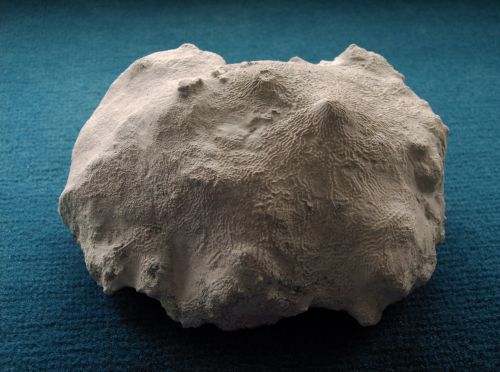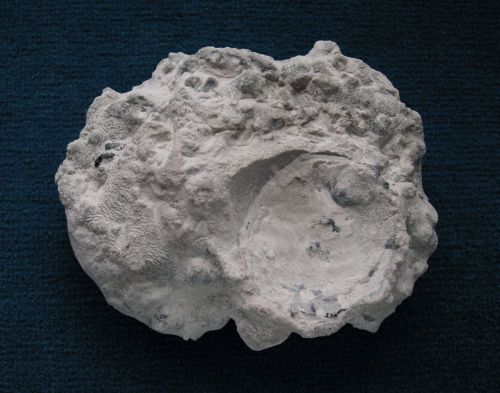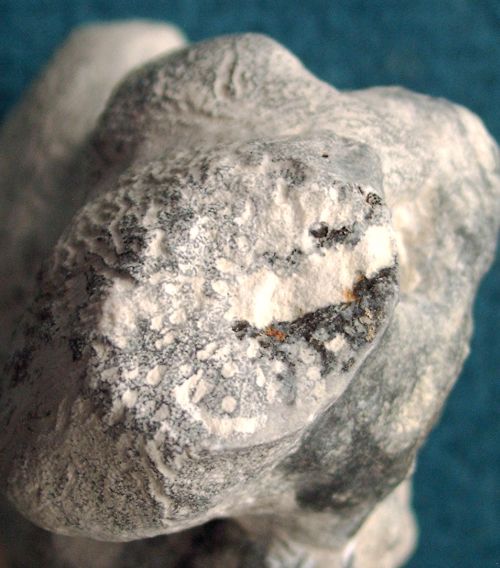
Lophiophora incrustans
Schrammen 1924
Lophiophora incrustans is a very rare species first described by Schrammen (1924). Schrammen wrote, that he could recover only two specimens.
The recently collected specimen of Lophiophora incrustans comes from the Upper Campanian of Misburg. It is a fragment of a once more extended, thick crust and has a hummocky upper surface covered by a dense network of anastomosing furrows. The truncated apices of the conical prominences show arrays of many densely crowded postica, each approximately one mm wide. The margins of the crust are rounded and grade into an irregulary structured bottom side.


The second specimen of Lophiophora incrustans, shown here from its upper and its bottom side, was collected in the Lower Campanian of the Alemannia quarry near Höver. The bottom side shows a mold and relics of an urchin corona, which became incrusted by the sponge.

Detail of Lophiophora incrustans, showing hummocks with radial anastomosing furrows.

Lophiophora sulcata
Schrammen 1924
Lophiophora sulcata is also a very rare species. Schrammen (1924) reported two specimens only.
The specimen of Lophiophora sulcata shown here is a nodular mass without stem or roots, consisting of several confluent, conical prominences. Its surface is covered by a dense network of anastomosing furrows. The truncated apices of the conical prominences show arrays of many densely crowded postica, each approximately one mm wide.

Detail of a fractured prominence of Lophiophora sulcata, showing cross sections of longitudinal channels which correspond to the groups of postica developed at the truncated cone apices.